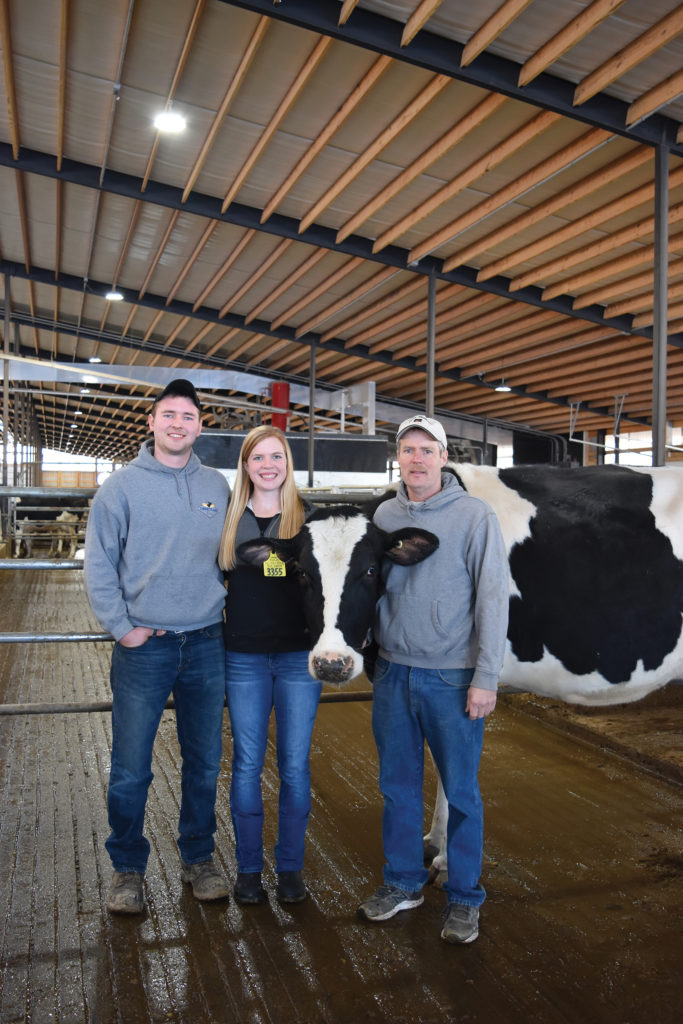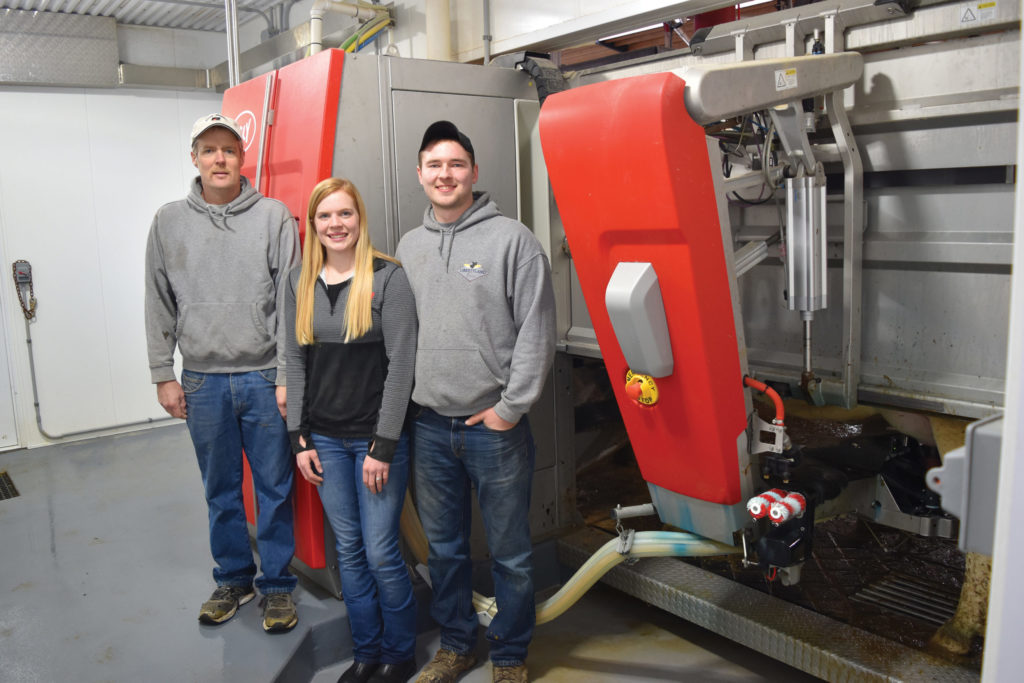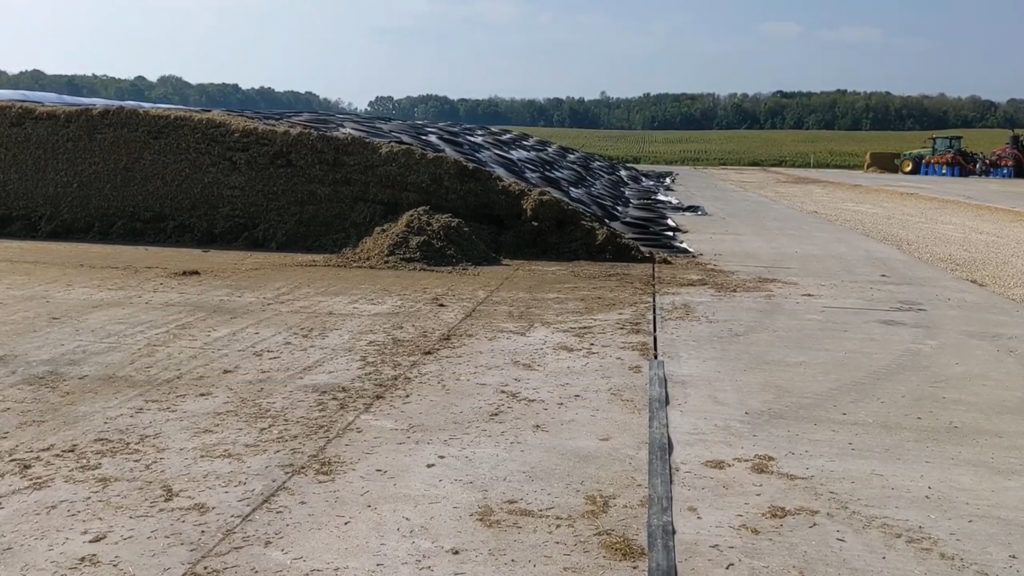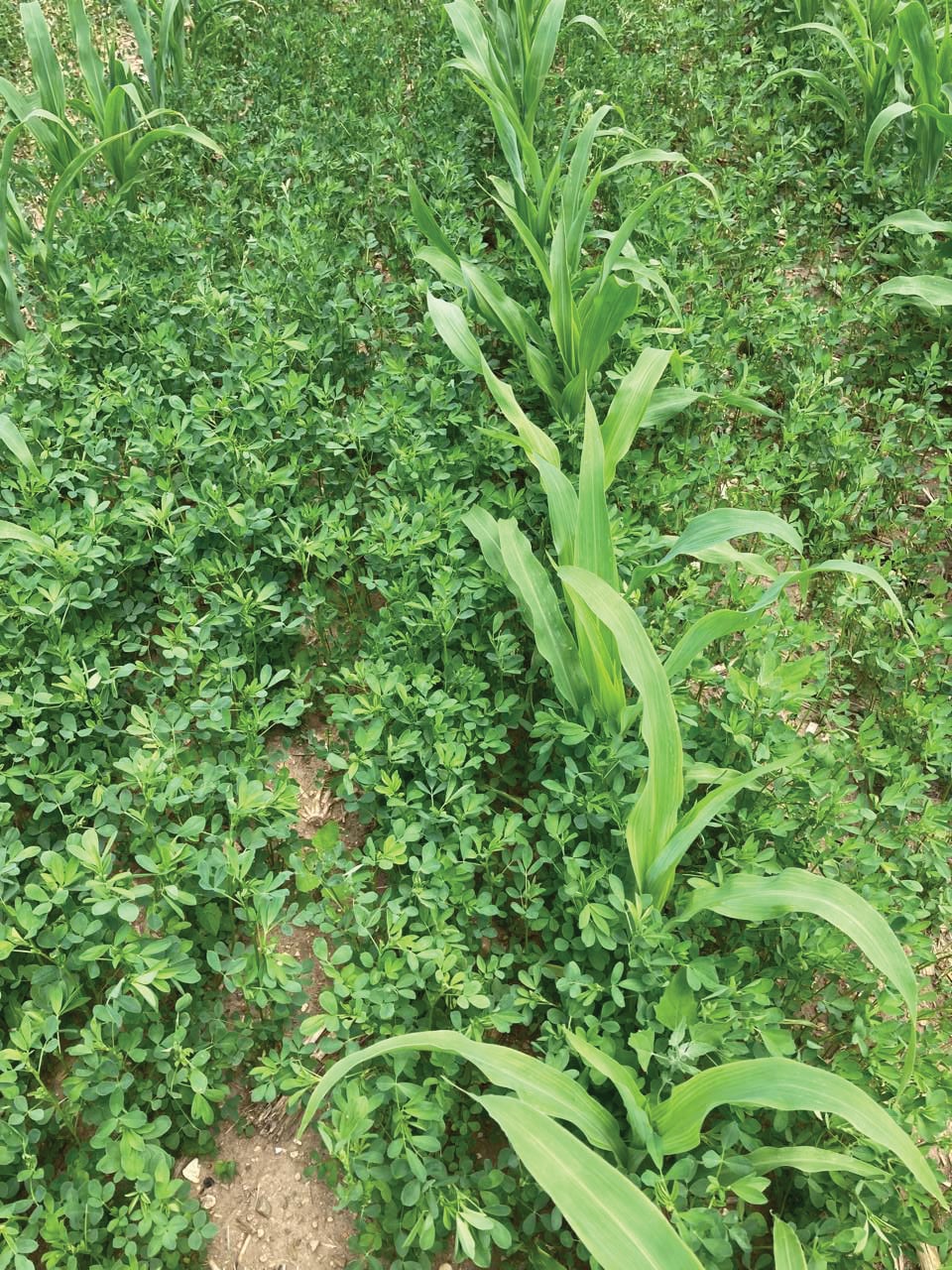 Libertyland Farms: Labor efficiencies and environmental considerations
Libertyland Farms: Labor efficiencies and environmental considerations
Sustainability is about leaving the land, water and soil better for the next generation.
It also means leaving a successful and profitable legacy for children and grandchildren to continue doing what they were called to do – contribute to a safe, sustainable food supply.
For the Gries family at Libertyland Farms in Valders in Manitowoc County, that meant expanding its dairy herd from 90 cows milked in a tie stall barn to 380 cows milked by five Lely robots.
Efficiency and Cow Comfort Promote Sustainability
Greg Gries saw robots as an opportunity for his daughter Rachel and son-in-law Zak to thrive and be successful on the farm. The expansion project was the next step in preserving the three-generation legacy started by his great-grandfather in the 1940s.
“My daughter and son-in-law wanted to be part of the farming operation,” said Greg. “The next generation was not going to be able to take over without improvement.”
They had reached maximum capacity in the tie stall barn. Even with additions to the tie stall throughout the years, it could not support the goals of the next generation. They moved into the new robot barn in Feb. 2020.
Labor efficiency is a sustainability success at Libertyland Farms. The family successfully manages five robots and almost 400 cows between three family members and one full-time employee.

Automation and advanced technology lend well to attracting a sustainable workforce. The up-and-coming generation of farm labor and employees are intrigued by the innovation and efficiency that comes with new technology on the farm. While the amount of labor on the farm is similar, robots and automation offer a flexible management style and an answer to the, ‘Who is going to milk?’ question.
Cow comfort is a priority at Libertyland. The new barn has sand bedding, flex stalls, cow brushes and plenty of open space to enhance cow comfort.
Because of this focus on cow comfort, the Gries’ are seeing increased longevity in the cows.
“We are excited to see another lactation or two from our oldest cows and we know that trend will continue as our youngest cows get older,” shared Rachel.
Each cow at Libertyland Farms wears an activity collar that communicates with the robot. This allows the Gries family to manage it individually. The robot software also communicates with a mobile app that notifies Greg, Rachel or Zak if something needs attention.
The robots have presented an exciting new challenge for the Gries family. Family members have embraced the new management style and are motivated to work hard toward making the herd even better.
“There is still plenty of work to do with daily cow care tasks, but I can go home for dinner at 6:30 p.m. and know my cows are still getting milked throughout the night,” noted Greg.
The added flexibility allows Greg to complete his cow care tasks and attend his daughter’s volleyball games. Rachel has a full-time job off the farm and can run the farm’s exceptional calf care program. Zak can help in the barn as needed but can focus his time and energy on the crops and equipment.
Environmental Considerations for the Expansion Project
The herd expansion necessitated increased feed and manure storage. Prior to the expansion, the Gries family was feeding the cows out of silos. They constructed a new feed pad as part of the herd expansion to store more feed for the growing herd.
Grieses installed Miller’s CLeaRTM rainwater diversion system to manage leachate and runoff collection from the new feed pad. CLeaR stands for ‘Collecting Leachate and Runoff.’ The state-of-the-art system separates clean water from contaminated water.
“The goal is to keep clean water clean,” Greg said.
Collection channels in the concrete open into an underground gutter and run the entire length of the feed pad.
The system offers some flexibility as the Grieses can move rubber closures to collect contaminated water closer to the feed pile and divert clean water in areas with no contamination risk. The gutter is always open in the “‘active use area’ – the area nearest the face of the feed pile.
The gutter is open under the entire length of the pile, so any leachate seeping from the pile is caught and diverted through the system.
Clean water flows to nearby fields and ditches. Contaminated water is contained in the gutters and flows into a small leachate pond. The leachate pond is connected to the larger manure storage facility.
Movable dams created from recycled manure draglines can be used to further divert the flow of contaminated water into the gutters and keep the clean water separated.
According to Miller Engineers Scientists, the system can reduce the amount of water collected in a leachate pond by up to 90%.
This was the first entire winter with the feed pad full. The farm has already seen savings in keeping the clean water clean. They have eliminated the need for extra storage for run-off water and can keep the excess water out of the manure storage.

Other Conservation Considerations
Greg has been experimenting with cover crops for several years. The farm is part of the Between the Lakes Demo Farms Network. Libertyland is the lead farm for the Manitowoc County branch of the Demo Farms group.
Greg and Zak have experimented with low disturbance manure application and planting cover crops directly after manure application.
“With minimal till manure we don’t destroy our soil structure,” shared Zak.
Planting cover crops immediately before minimal disturbance manure application minimizes loss of manure nutrients. Zak and Greg have noticed a boost of cover crop growth and better root structure to prevent erosion. The well-established cover crops promote nutrient uptake that will be returned to the soil in the spring through plant decomposition rather than risking it being tied up or leaching off in the fall.
Greg also has experimented with inter-seeding corn and alfalfa and frost seeding winter rye into corn stubble.
“I’m going to keep trying more cover crop species and tweaking a few things to keep getting better,” said Greg.
The Gries family had sustainability and longevity in mind when expanding the herd and building a new facility. From environmental considerations to labor efficiencies, the Gries family has set themselves up for success for generations to come.
Story and non-supplied photos by Rachel Gerbitz. Originally appeared in the April|May 2022 Rural Route.



Leave a Reply